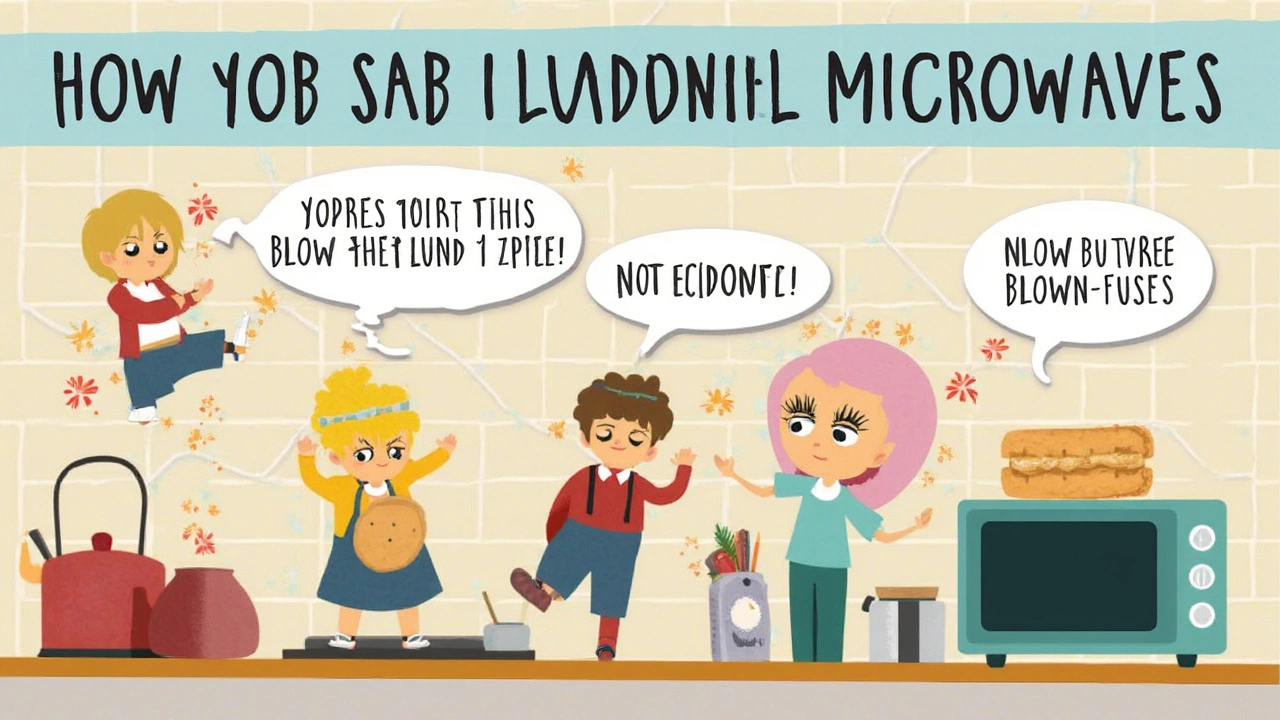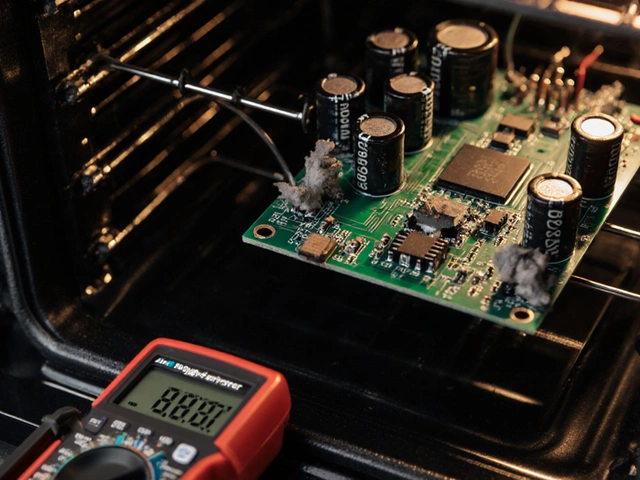Microwaves are those trusty kitchen gadgets we kind of rely on, right? But when they stop working, it can feel like you've suddenly lost an arm. What usually goes wrong in these things, and what can you do about it before tossing it to the curb?
First off, let's talk about fuses. These small components are meant to protect your microwave from power surges. When they blow, your microwave stops working entirely. You can check the fuse with a multimeter to see if it’s the problem. If you’re handy, replacing a fuse yourself is doable but always make sure it's unplugged first!
Blown Fuses
Alright, let's dive into the world of microwave repair by tackling one of the most common culprits: blown fuses. These little guys are literally lifesavers for your microwave, saving it from unexpected power spikes that could fry its insides like a forgotten TV dinner.
So, how do you know if a fuse has blown? It's pretty straightforward. If your trusty microwave suddenly stops turning on, no lights, no beeps, there's a good chance it’s the fuse. To confirm, you’ll need a multimeter to check if the fuse's filament is still intact. If the fuse needs replacing, make sure to unplug your microwave first. Safety first, folks!
Once you’ve determined the fuse is indeed the issue, follow these steps:
- Disconnect the power cord (trust me, this is crucial!).
- Remove the outer panel to access the fuse, which is usually near the back or next to the control panel.
- Use a multimeter to test the fuse. If the reading shows zero, it's blown.
- Replace it with a fuse of the same type and rating. Close everything up and plug it back in.
Replacing a fuse might sound intimidating, but it's one of the easier DIY fixes you can tackle in microwave repair. Be sure to use the correct fuse type to avoid potential hazards. If you’re unsure about anything, don't hesitate to consult a professional. Still, once you’ve got the hang of it, you might just save yourself a lot of hassle—and maybe even some cash!
Door Switch Problems
Ever thought a microwave could be such a diva about its door? You bet! The door switch is one of those things you don't think about until it stops working, and then it's like, 'Why, oh why?' So, what happens when the door switch gives up on you?
When your microwave door doesn't close right, it can actually prevent it from starting. This isn't your microwave being lazy—it's safety. The door switch ensures the microwave won’t operate while open, keeping all those electrical beams safely inside. But when the switch itself goes bad, it can stop working even when everything looks fine. Talk about annoying!
Here's a quick way to check: if your microwave isn't starting up, listen for a click when you close the door. No click? The switch might be the culprit. Fixing it can be pretty straightforward. You’d need to unplug the microwave (seriously, always do this first). Then, you access the control panel to where the switches are. Usually, microwaves have three: primary, secondary, and monitor switch. A multimeter can help see which one's faulty.
If you're diving in to replace a door switch, here’s the general drill:
- Unplug the microwave for safety! Can’t stress that enough.
- Remove the screws from the control panel area to access the switches.
- Carefully disconnect the wires from the faulty switch.
- Attach the new switch and reassemble everything.
By handling these microwave issues yourself, you save not just your hard-earned cash but also the bummer of spending days without reheating those leftovers!

Turntable Issues
Ah, the turntable, the spinning stage that keeps our food cooking evenly. When it stops working, you might notice your leftover pizza isn't heated evenly—cold spots galore! Before you panic, remember that dealing with turntable problems is often about straightforward troubleshooting.
Check if the glass tray is placed correctly. Misaligned trays can prevent it from spinning. Also, look underneath to see if the roller guide is aligned properly. It's a simple, yet common issue where the rollers aren't sitting right in their groove.
If everything looks fine but the turntable still won't move, the issue might lie with the motor. Testing this requires removing the bottom panel of the microwave and using a multimeter to see if the motor is getting power. Don't hesitate to grab a replacement if necessary. Replacing it might sound technical, but it’s pretty straightforward—just make sure your microwave is unplugged before diving in!
Sometimes, microwaves with digital controls have options to turn off the turntable. Make sure it's not accidentally switched off in the settings.
| Common Turntable Problems | Possible Cause | Quick Fix |
|---|---|---|
| Tray not spinning | Misaligned rollers | Realign and ensure proper placement |
| Uneven heating | Turntable's motor issue | Test and replace motor if needed |
| No rotation option active | Settings turned off | Check and reset settings |
Remember, a little patience can go a long way with these fixes. After all, you'll want your microwave back in action, so you can enjoy hot, evenly cooked meals without a hitch!
Unusual Noises
Ever heard your microwave making strange sounds, like it's auditioning for a horror movie? Yeah, that's not normal. But don’t panic just yet. These noises can be a sign of a few different issues, and some are easier to fix than you'd think.
First, let's check out one common culprit: the turntable motor. If it's grinding or humming, it might be struggling. Turn off the microwave, remove the glass plate and inspect the motor housing. Sometimes, a simple cleaning and realignment can do wonders. If that doesn’t help, you might need to replace the motor, but that's usually a straightforward fix.
Another common source of noise is the magnetron. If you hear a buzzing or rattling, it could be wearing out. Replacing a magnetron isn't a typical DIY job unless you're pretty handy with electronics, but knowing this can speed things up when talking to a repair technician.
Noises can also stem from loose parts. If your microwave sounds like it’s alive, give it a gentle shake (unplug it first, of course). Listen for loose components. Take a peek inside and tighten any screws you find using a screwdriver.
To help you diagnose the issue, here's a quick noise troubleshooting chart you can refer to:
| Noise Type | Possible Cause |
|---|---|
| Rattling | Loose screws or parts |
| Grinding | Turntable motor issue |
| Buzzing | Defective magnetron |
Remember, while some noise-related problems can be resolved easily, others might require expert help. Keep an ear out and address issues early to prevent bigger headaches down the line.





